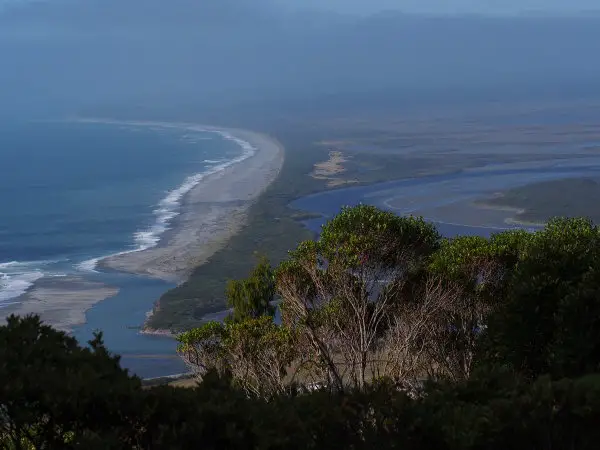When fishermen fly to New Zealand, most of them head in one direction. Towards the mountains and the backcountry fisheries.
There they will spend countless hours fishing in pristine mountain valleys, sight fishing to respectable size brown and rainbow trout. This high-country fishing is what made New Zealand famous, and it still holds a close place to my heart.
But, this fishery. Is also a victim of its own success. The famous trout streams are crowded, and as spring, changes into summer the trout become increasingly wary. New Zealand trout are skittish at the best of times, and after months of being fished over, caught, and released they can be outright paranoid by the time autumn springs around.
Many of these rivers are also only big enough for one angler per day, and many miles of walking can be required between fish. If you are unlucky enough to be the second fisherman onto a section, the fishing is going to be dead.
I love fishing in the mountains, but it is only a shadow of its former glory. In my home river, the Wairau, during the 1980s and early 1990’s it was not uncommon for anglers to catch double-digit numbers of large brown trout in a day. These days, three of four trout in the same weight range will is a memorable day. The trout are mostly still there, they have just become that much harder to catch.
This brings me, to the topic of this article. There is one fishery in New Zealand that is even more likely to produce big fish than the headwaters, it also might just be where these trophy trout pack on condition before their headwater migrations. Best of all relatively few people actually fish for trout there. I am talking about the estuaries and tidal portions of rivers.
Both resident and sea-run fish.
Estuaries are home to both resident and sea run trout. At times, I have caught the most beautiful sea run, dressed in silvery scales, and the following cast into the same ripple will produce a brown in full river pattern. Two trout, of the same species, from the same spot with such drastic differences in appearance, are certainly memorable.
While they can be caught in the same water, they do exhibit somewhat different behavior. The sea-runs trout are more likely to school. Entering the river in groups, where they will hold up in areas of increased current.
The resident fish, are more likely to be loners and will spend much of their time patrolling the shoreline. Seeping up nymphs and harassing baitfish from their hides.
Both resident and sea-run trout will rest in front and behind structure (usually submerged logs). Remember, that this area is tidal. So depending on the time of tide, they can be facing in either direction, but they always feed facing the flow.
How big do the trout get?
I will admit, the average-size trout is not massive. There is a lot of trout in the 1 to 3lb range. But, because the water is so big. A trout of trophy proportions is always a possibility.
Trout over 10 lbs are not unheard of, and fish of that size are likely more numerous than in the mountains.
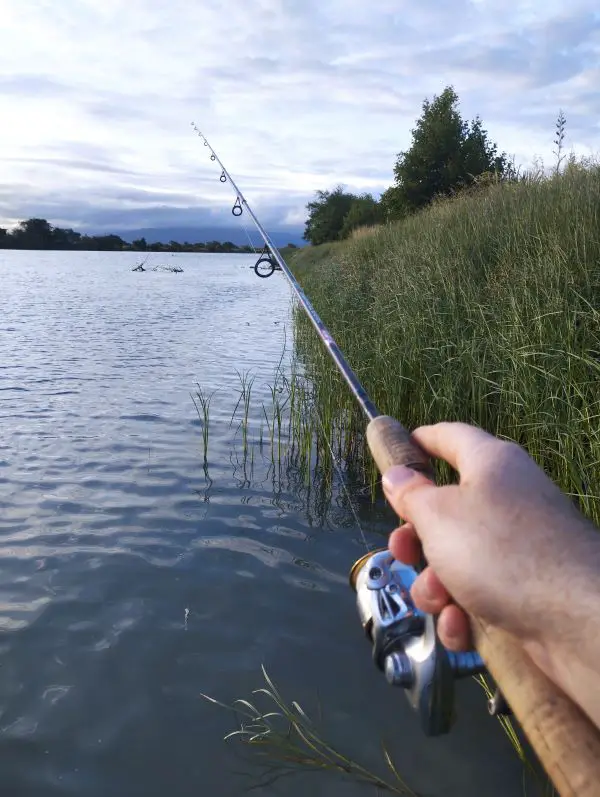
What is the best time of day?
The estuaries, generally fish best in the evening, and early morning before the wind picks up.
My favorite time to fish is in the evening. It is very relaxing to spend a few hours fishing as the sun sets behind the hills. When I am very motivated, and the evening is warm, I will continue to fish after dark, sometimes into the small hours of the morning.
The largest trout can be very nocturnal, and most trophy trout are caught during the hours of darkness. When night fishing, I mostly just wait until I hear the splashes and swirls of a trout feeding near the surface, then I cast directly at them.
It is not sight fishing, but hearing fishing.
In the winter months, I mostly fish during the day when it is a bit warmer and the trout seem to be more active.
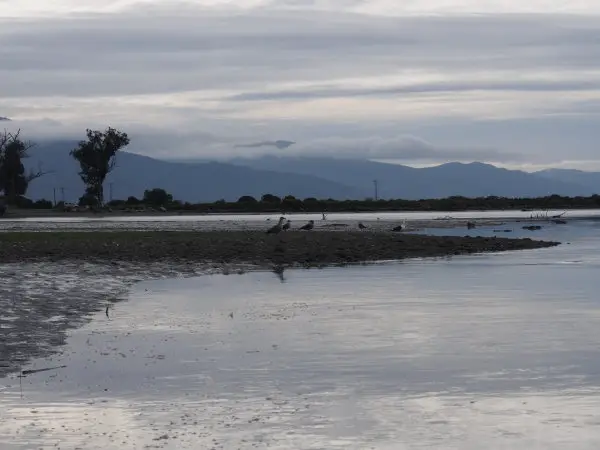
Does tides matter when estuary fishing?
Yes, and no.
When conditions are right, trout will feed no matter the tide. But the tides certainly will influence where in the estuaries the trout are more likely to be.
During the outgoing tide, the current forces bait fish species into the eddies close to the shore. The trout follow, for this reason. Fishing the river edge can be more productive during the outgoing.
More of the river is also accessible at low tide, gravel bars that are under water at high tide can be walked with dry feet. It is easier to identify deep holes and the main channels. It is also possible to walk more of the river bank.
During the incoming tide, expect to find the trout moving upstream. The estuary fish will sometimes migrate as far as the first set of rapids.
Slack tide, is a time of very little current. During this time, the trout are more dispersed, and they are more likely to be patrolling a beat, than holding in place. High tide is my favorite time to troll because the trout are often feeding in deeper water.
After the spawn, trout travel there to pack on condition
One of the best times to fish in the estuaries is in the winter and spring. I will discuss the winter first, and in the next section will cover the spring.
After spawning, brown trout will quite quickly drop out of the headwaters and will make their way to the lower river. They head to the estuaries for several reasons. The first is to take advantage of the abundance of food, the second is that the sea in winter is several degrees warmer than the river.
It is the perfect winter refuge for them, and the large slow river also protects from them against the worst of the winter floods.
During the winter, aquatic insect populations decline, so the trout will spend much of their time hunting baitfish, and patrolling the shallows for crabs that are slightly too slow.

During the spring, trout gorge themselves on whitebait
Spring is when the estuary fishing is at its best.
This is because whitebait, the juvenile form of tiny fish enters the rivers in large numbers. The trout, and any other predatory fish in the river absolutely gorge themselves on the whitebait.
On calm evenings, I like to walk the shoreline and listen for trout as they herd schools of whitebait into the shallows where they charge into them. There is little that is more exciting in fly fishing, than throwing a streamer right into the middle of such a school.
When the whitebait is running, I nearly always use a grey ghost fly. It is a good imitation. Silicon smelts also work well for an exact imitation.
The best month to fish the estuaries
| Month | What the trout are doing |
|---|---|
| January | The first proper month of summer, long daylight hours, and consistent fishing. Saltwater fish like Kahawai dominate the fishery for the next few months. |
| February | In some estuaries, the water is a bit warm chance of algae blooms. The trout will go deep or seek out thermal refuges. Pacific salmon also start entering rivers in increasing numbers. |
| March | Water temperatures start to cool, trout numbers are decent and the weather is very settled. The best fishing is in the evening. |
| April | In Autumn, the fishing is very consistent, trout numbers start to increase with cooler temperatures. Sea run trout start entering for their spawning migrations. |
| May | More brown trout depart the estuary for spawning. Fishing is still decent. |
| June | Winter and many trout are now dropping back. Very few if any Kahawai remain in the river. |
| July | Fishing is slow because of the cold, but they are there. |
| August | Whitebait starts to run, trout become more active on warmer days. |
| September | Whitebait numbers increase excellent trout fishing when the weather allows. Both resident trout and sea-run trout return to the river for the feast. |
| October | The peak of the whitebait season, excellent trout fishing. Opening weekend, many fishermen head for the hills. Unsettled weather. Some Kahawai also turn up feeding on the bait. |
| November | Whitebait numbers start to decline, days are warmer but windier. Trout fishing is consistent. |
| December | Early summer, with very long days, and consistent fishing. Some trout might migrate upstream in search of food or cooler water. |
What is the best gear for estuary fishing?
I use either a 6wt or an 8wt.
The 6wt is ideal for calm evenings when I am throwing smaller streamers. While the 8wt comes into its own when I want to throw bigger flies, or when the Kahawai are also in the river.
These trout, are not normally that line shy, and the water is rarely crystal clear. This makes it possible to use thicker leaders and tippet. I quite often use tippit in 3x or 2x.
This heavier tippet, also makes it faster to land bigger fish.
How about spinning tackle?
Spinning gear also works well. I normally throw jerkbaits, such as Rapala’s with an ultralight rod. It can be extremely productive. Due to the extra casting distance, I prefer to fish braid over monofilament.
Spoons also works well, but fish the smallest size possible. I have found, that trout often ignore bigger spoons that many locals cast to catch kahawai.
Sight fishing is still possible
I accept, there is a lot of blind fishing. Just throwing streamer, and retrieving.
Although, sight fishing is still very important.
With the assistance of elevation, it is still possible to spot trout close to shore, and I always look for submerged logs. When I find a log, I know it is a prime spot to make a few casts.
Finally, at dusk and after dark. I use both my eyes and ears to find the fish. The trout are often chasing bait close to shore, and following the splashes is the best way to find fish.
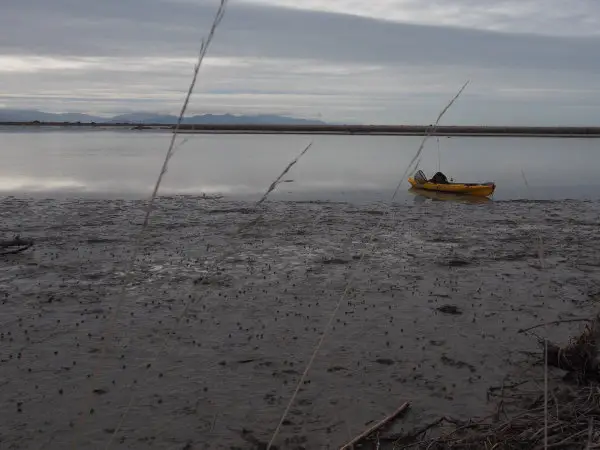
Boats are useful, but not essential
Estuaries are massive, there is a lot of water to cover, and a lot of the shoreline is either on private property or inaccessible due to thick vegetation or muddy shoreline.
Fishing from a boat opens up a lot more options. I also often will use a kayak just to paddle to the inaccessible side of a river. Sometimes, I will cross over just to make sure the wind is behind me.
Like all trout fisheries, the side of the river next to the road sees a lot more pressure. The far side sees no one. The fishing is normally a lot better.
Estuaries can still be beautiful
Many people think of river estuaries as muddy, smelly wetlands, often teeming with birds and bugs.
I disagree, in their own way they are quite scenic. Sure, they lack the majestic beauty of towering peaks, but they still have a down-to-earth charm.
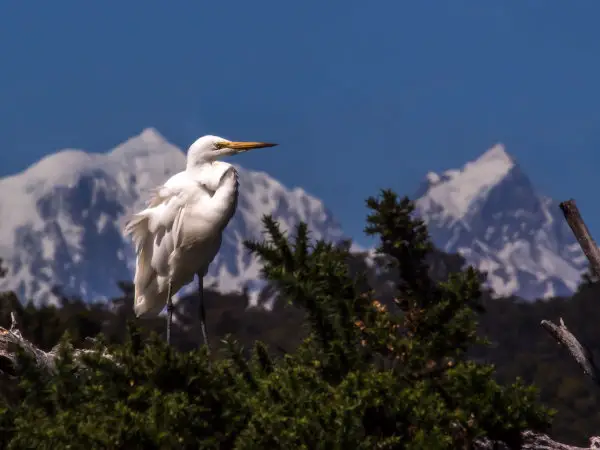
Best of all, you are likely to have the area to yourself.
Finally, when fishing in the backcountry, there is a very good chance you will be fishing in the footsteps of others.
The estuaries are the opposite, except for right at the mouth where the river enters the sea, or in rivers like the Waimakariri that are close to a major city it is rare to see other trout fishermen. Chances are high that you will have the entire place to yourself.
No need to change your plans to accommodate others.
No need to rush upstream, to prevent others from jumping ahead. It is possible to fish at any pace, with the knowledge no one is following behind.

